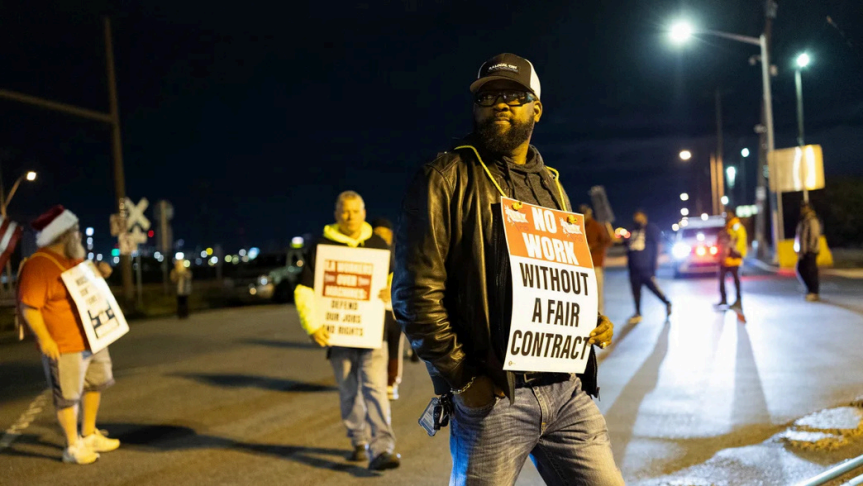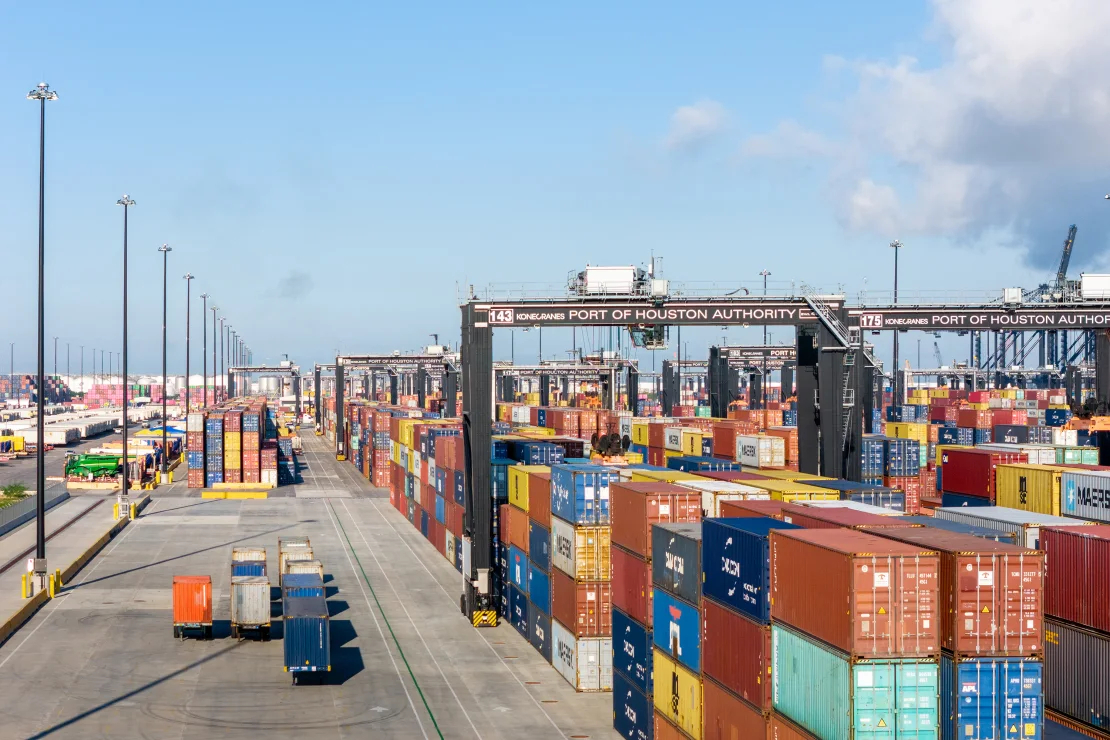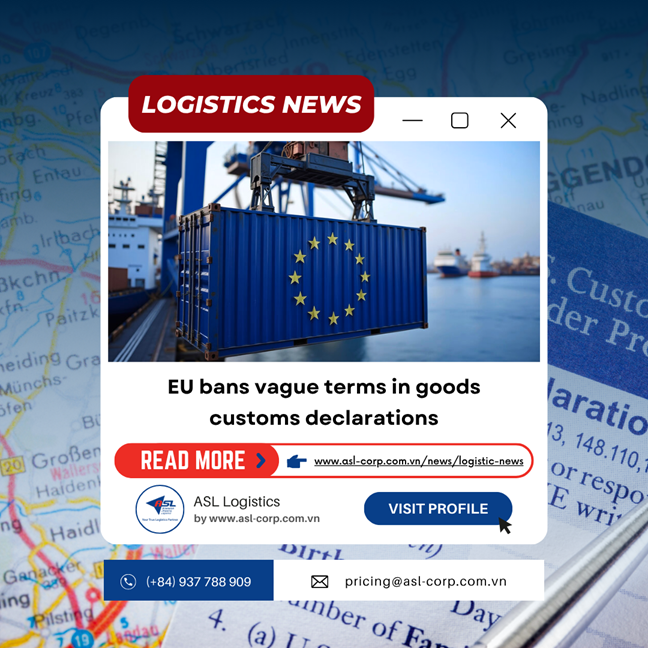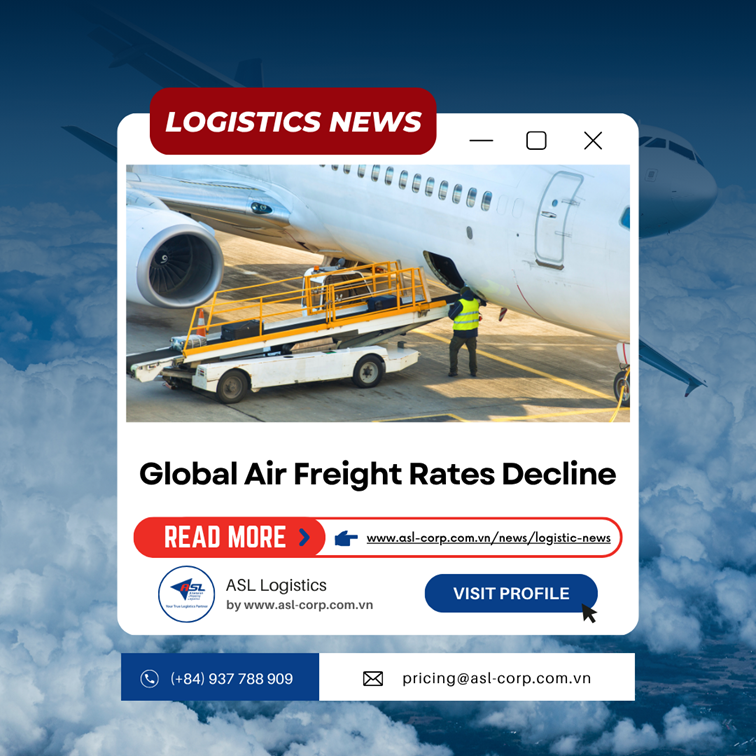Logistic News
50,000 STACKERS GO ON STRIKE, US ECONOMY IS BLOCKED AND IN DISORDER
01 October 2024
Starting October 1 (local time), nearly 50,000 members of the International Longshoremen's Association (ILA) went on strike at ports on the East Coast and Gulf Coast of the US, blocking the flow of many import and export activities in this country.
Large-scale strike
According to US media, a large-scale strike took place at ports on the East Coast and Gulf Coast of the US right from the moment of transition to October 1 (local time).
CNN reported that nearly 50,000 members of the International Longshoremen's Association (ILA) participated in the strike, while Canada's CBC news agency reported that 45,000 people participated in the strike to fight for higher wages and job security. Previously, the US Maritime Union (USMX) said that about 25,000 workers would participate in the strike.
According to USMX, the strike is expected to close 14 ports: Baltimore; Boston; Charleston, South Carolina; Jacksonville, Florida; Miami; Houston; Mobile, Alabama; New Orleans; New York/New Jersey; Norfolk, Virginia; Philadelphia; Savannah, Georgia; Tampa, Florida; and Wilmington, Delaware.
Meanwhile, according to CBC, the total number of affected ports could reach 36, with the capacity to handle up to half of the US trade volume.
This strike, the first to occur at East Coast and Gulf Coast ports since 1977, comes after a long stalemate in labor negotiations between the International Longshoremen's Association (ILA) and the United States Maritime Union (USMX), an industry group representing port operators and shipping lines.

Longshoremen protest outside the Packer Avenue Marine Terminal in Philadelphia, Pennsylvania.
The ILA is demanding significant wage increases and a complete ban on the use of automated cranes, gates and container trucks to unload cargo.
The union said it has “shut down all ports from Maine to Texas … as tens of thousands of ILA members begin to form picket lines at waterfront facilities across the Atlantic and Gulf Coasts” after USMX’s latest offer “fell short of what ILA’s grassroots members are demanding on wages and protections against automation.”
The ports of New York and New Jersey quickly announced they would close many facilities on October 1 due to the strike. The Port of Virginia followed suit.
Workers began protesting at the Port of Philadelphia shortly after midnight, forming a circle on a railroad track outside the port and chanting “No work without a fair contract,” according to AP News, adding that the ILA had erected a sign on a truck that read “Automation hurts families: ILA fights to protect jobs.”
President Biden, a close ally of organized labor, has so far declined to intervene, citing the need to respect collective bargaining rights. But business groups are sure to step up calls for action if the strike drags on.
The move comes on the heels of strikes by U.S. automakers and Boeing, among others.
The impact on consumers and the U.S. economy
The ports affected by the strike handle about half of the cargo shipped by U.S. ships. As a result, experts say the economic impact of a prolonged work stoppage could be significant, potentially increasing the cost of consumer goods and creating shortages ahead of the holidays.
More specifically, CBS News reported that a weeklong strike could cost the U.S. economy nearly $3.8 billion and increase the price of consumer goods.
Another analysis from JPMorgan predicted that a strike could cost the U.S. economy $5 billion a day.
For consumers and businesses, a prolonged strike could impede the shipment of products like bananas, manufacturing components, plywood, and raw materials like cotton and copper. Fresh meat and other frozen foods could also spoil, leading to shortages and price increases.

However, many businesses have been preparing for months, stockpiling products that could be disrupted by the port closure.
Shortly after the strike began, New York Governor Kathy Hochul issued a statement saying that her administration “has been working around the clock to ensure that our grocery stores and healthcare facilities have the essential products they need. It is critical that USMX and ILA reach a fair agreement soon that respects workers and ensures the flow of commerce through our ports. In the meantime, we will continue to work to minimize disruptions for New Yorkers.”
At a press conference on September 30, Hochul said New York does not expect shortages of essential goods in the near future and advised consumers not to stockpile goods.

Higher Costs, More Delays
A strike would generally increase shipping costs and cause extended delays.
The top five ports in the negotiating group—New York and New Jersey; Savannah, Ga.; Houston; Norfolk; and Charleston, S.C.—handled more than 1.5 million 20-foot equivalent units worth $83.7 billion in August, according to John McCown, a senior fellow at the Center for Maritime Strategy. About two-thirds of that volume was imports, while the rest was exports, he said.
Logistics experts warn that disruptions to trade caused by the stoppage would begin immediately, driving up interest rates and affecting the entire U.S. economy.
Analysts at Sea-Intelligence, a Copenhagen-based shipping consultancy, estimate that it could take four to six days to clear the backlog after a single day of a strike.
Maersk, one of the world's largest shipping companies and a member of the employers' group, has warned that a one-week shutdown could take up to six weeks to recover, "with significant backlogs and delays growing by the day".

Head Office
ASL Hồ Chí Minh
Số 31/34A Ung Văn Khiêm, Phường Thạnh Mỹ Tây, TP. Hồ Chí Minh, Việt Nam
 Công Ty Cổ Phần Giao Nhận Vận Tải Mỹ Á
Công Ty Cổ Phần Giao Nhận Vận Tải Mỹ Á
 (+84)28 3512 9759
(+84)28 3512 9759
 (+84)28 3512 9758
(+84)28 3512 9758
 pricing@asl-corp.com.vn
pricing@asl-corp.com.vn
 mdirector@asl-corp.com.vn
mdirector@asl-corp.com.vn
 www.asl-corp.com.vn
www.asl-corp.com.vn
LOGISTICS SERVICES










.png)
.png)

.png)





